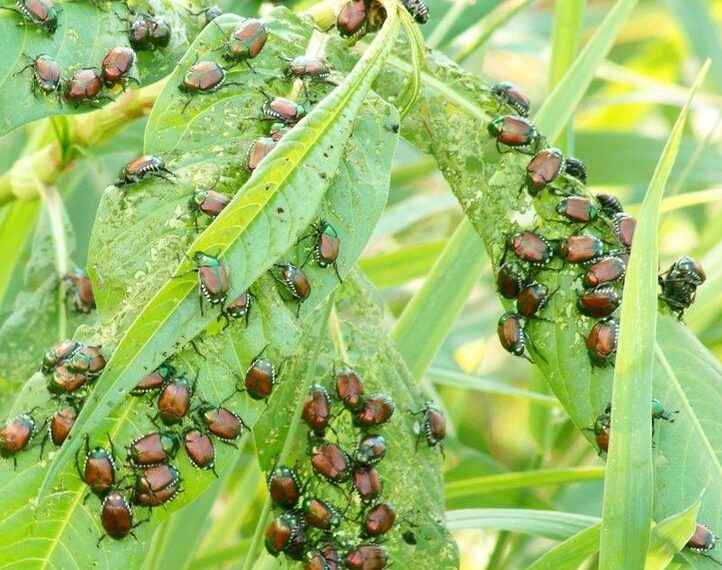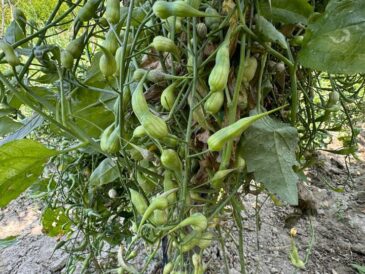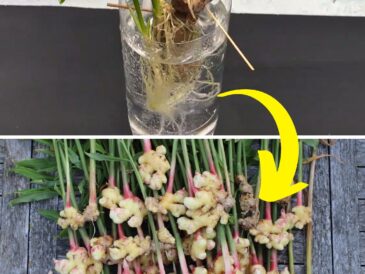Maintain a Healthy Lawn
- Keep your lawn well-aerated and fertilized to strengthen grass roots.
- Water deeply but infrequently to discourage grub development.
Choose Resistant Plants
- Opt for plants less attractive to beetles, such as marigolds, chrysanthemums, and ferns.
Crop Rotation
- Rotate crops annually to disrupt the beetles’ lifecycle.
6. Controlling Grubs in Lawns
Grubs are the root of the problem—literally.
Natural Solutions
- Beneficial Nematodes: These microscopic organisms attack and kill grubs.
- Milky Spore Powder: A bacterial disease that targets Japanese beetle larvae.
Chemical Options
- Apply insecticides like imidacloprid in late summer when grubs are most active.
7. Managing Adult Beetles
Once beetles emerge, it’s time for a multi-faceted approach.
Handpicking
- Remove beetles by hand in the early morning when they are sluggish.
- Drop them into soapy water to kill them.
Traps
- Use pheromone traps sparingly as they can attract more beetles than they capture.
Neem Oil
- Spray plants with neem oil, which deters feeding and reduces egg-laying.
8. Natural Predators: A Garden Ally
Encouraging natural predators can help control Japanese beetles.
- Birds: Robins and starlings feast on grubs.
- Parasitic Wasps: Certain wasp species attack beetle larvae.
9. Companion Planting for Beetle Defense
Use companion planting to deter Japanese beetles.
- Garlic and Chives: Repel beetles with their strong scent.
- White Clover: Acts as a trap crop, drawing beetles away from other plants.
10. Timing Is Everything
Target beetles at the most vulnerable stages of their lifecycle:
- Late Summer: Focus on grubs before they burrow for winter.
- Early Summer: Address emerging adults before they begin mating.
11. Long-Term Control Strategies
Combatting Japanese beetles requires consistent effort:
- Regular Monitoring: Inspect plants and lawns weekly during peak beetle season.
- Integrated Pest Management (IPM): Combine natural, cultural, and chemical controls for the best results.
12. Environmental Considerations
When using chemical treatments, be mindful of the environment:
- Avoid spraying insecticides near pollinators.
- Use natural solutions whenever possible to protect beneficial insects.
Conclusion
Japanese beetles may be a formidable garden foe, but with the right strategies, you can keep their damage under control. From maintaining a healthy lawn to encouraging natural predators, every effort counts in safeguarding your plants. Addressing both the adult beetles and their grub stage is essential for long-term success. With diligence and creativity, you can reclaim your garden from these binging beetles.
FAQs
1. When is the best time to treat Japanese beetle grubs?
Late summer to early fall is ideal, as grubs are actively feeding on grass roots.
2. Do Japanese beetle traps work?
They can be effective but may attract more beetles than they catch, so place them far from your garden.
3. Can Japanese beetles kill plants?
Yes, heavy infestations can weaken or kill plants by defoliation and disrupting photosynthesis.
4. Are there any plants Japanese beetles avoid?
Yes, plants like ferns, boxwoods, and begonias are less attractive to beetles.
5. How long do Japanese beetles live?
Adult beetles live for about 4-6 weeks, but their damage can linger throughout the growing season.




 What Does It Mean If Your Honey Crystallizes?
What Does It Mean If Your Honey Crystallizes?